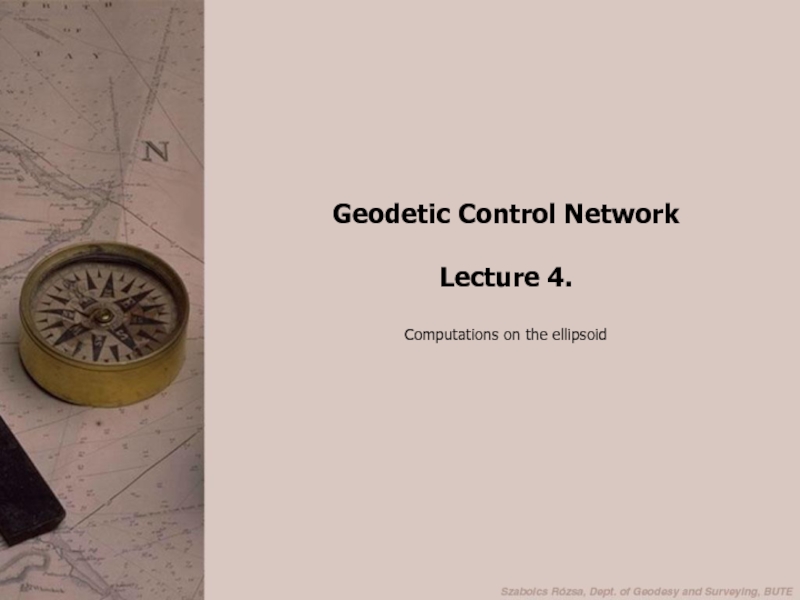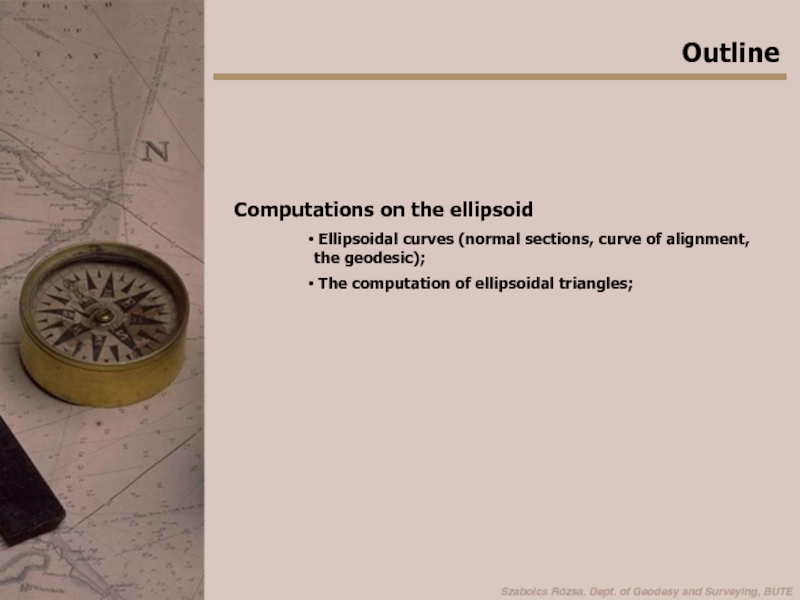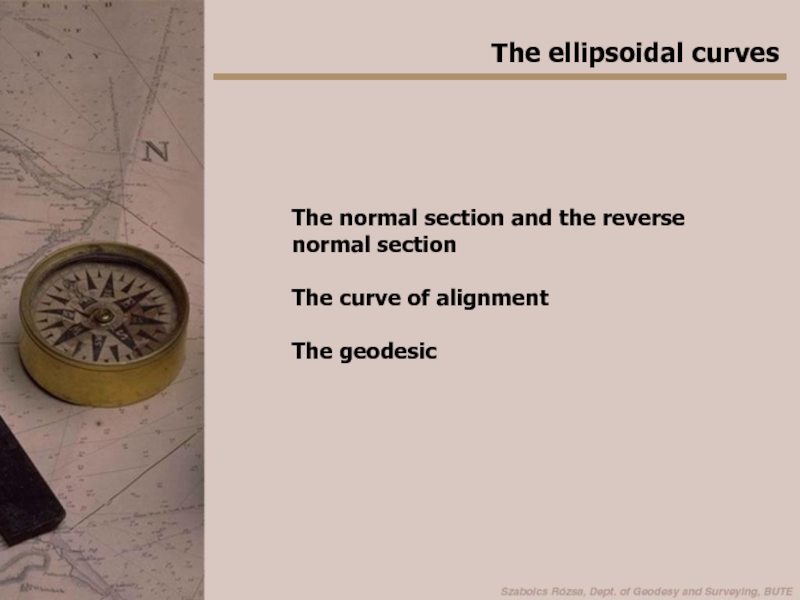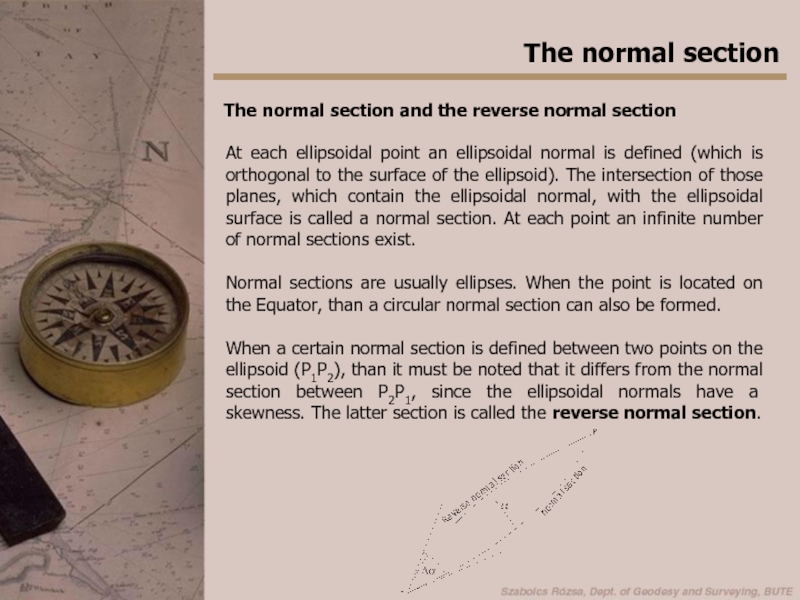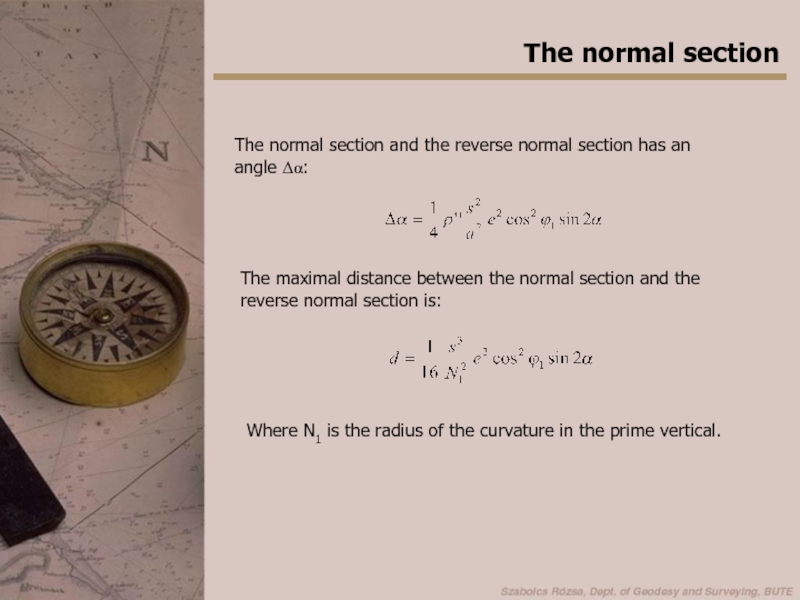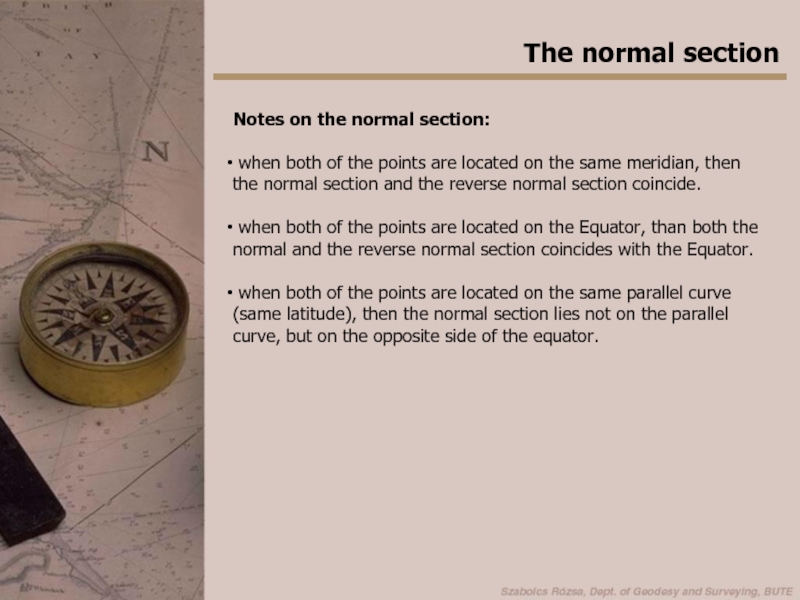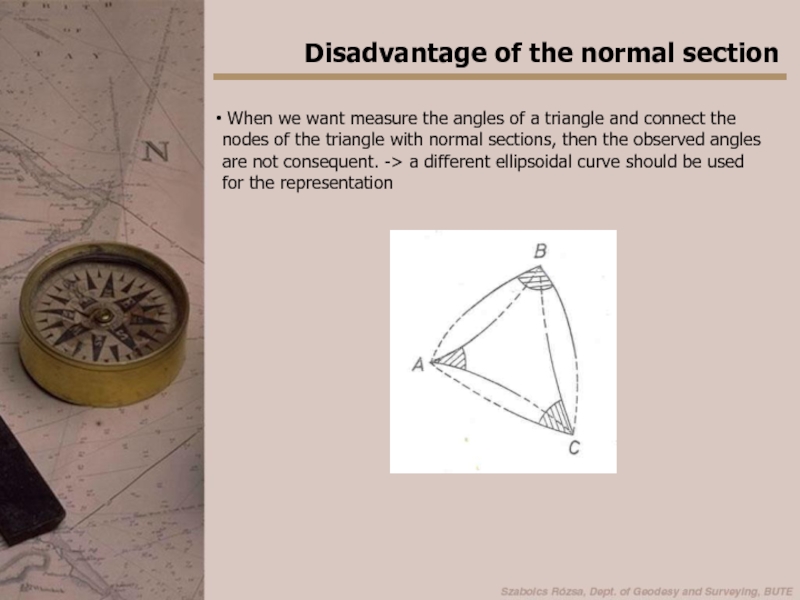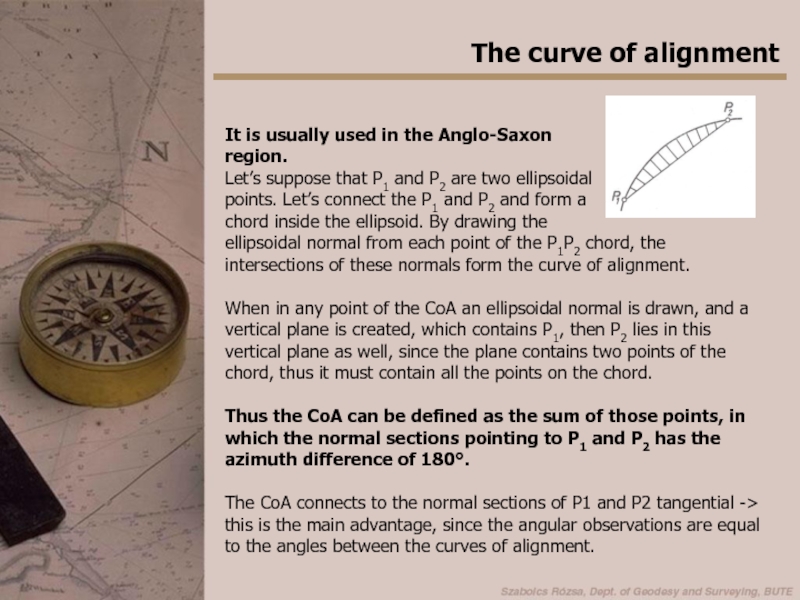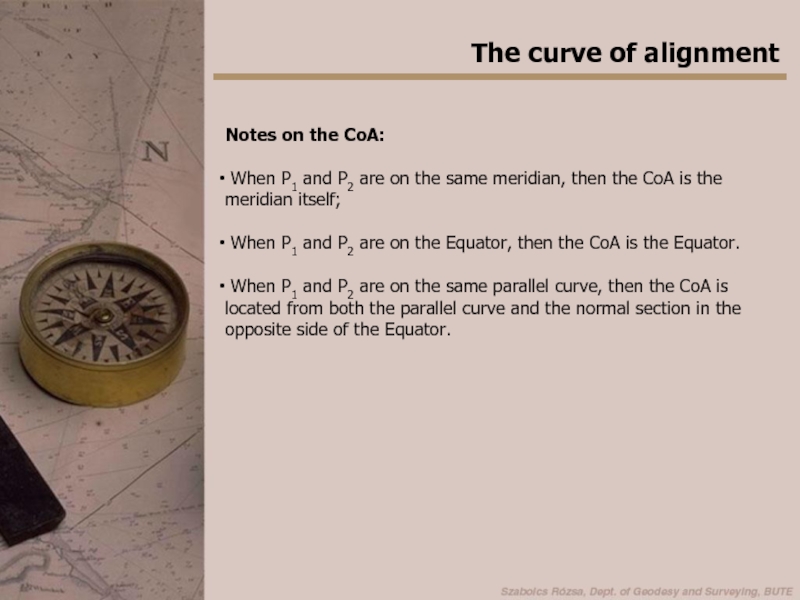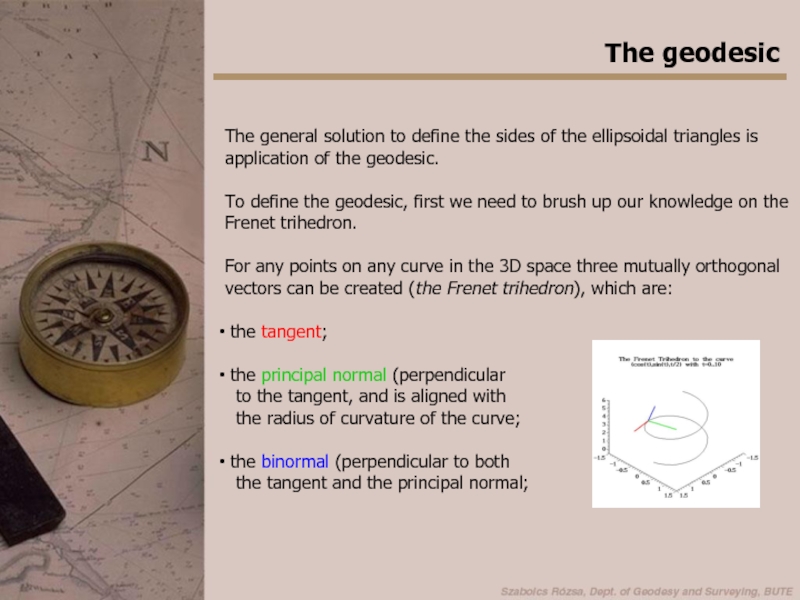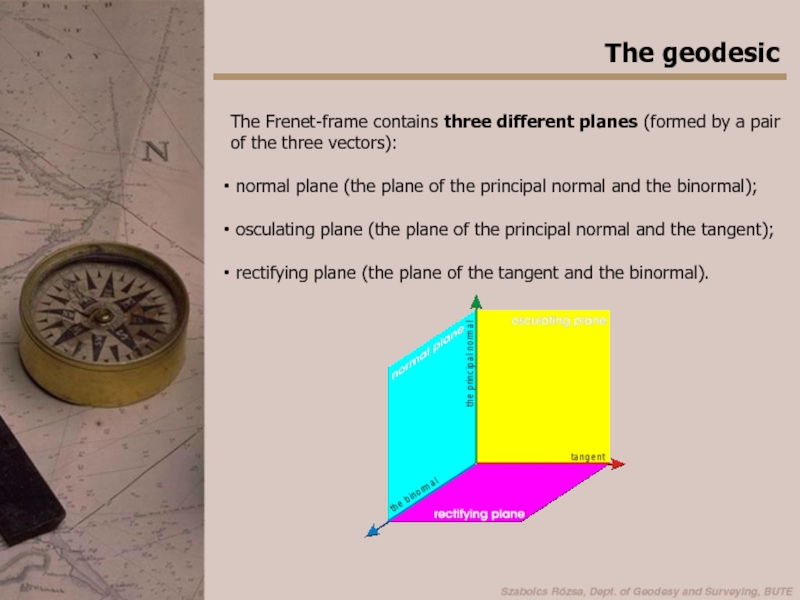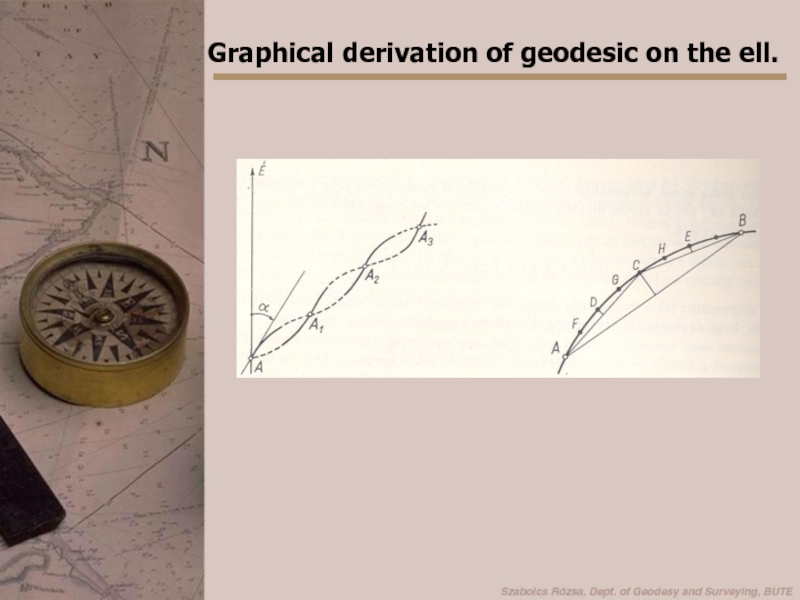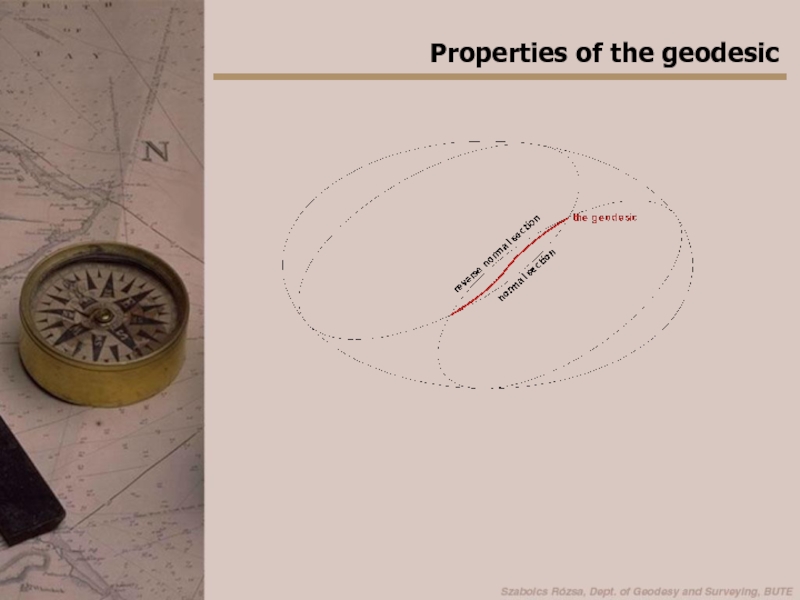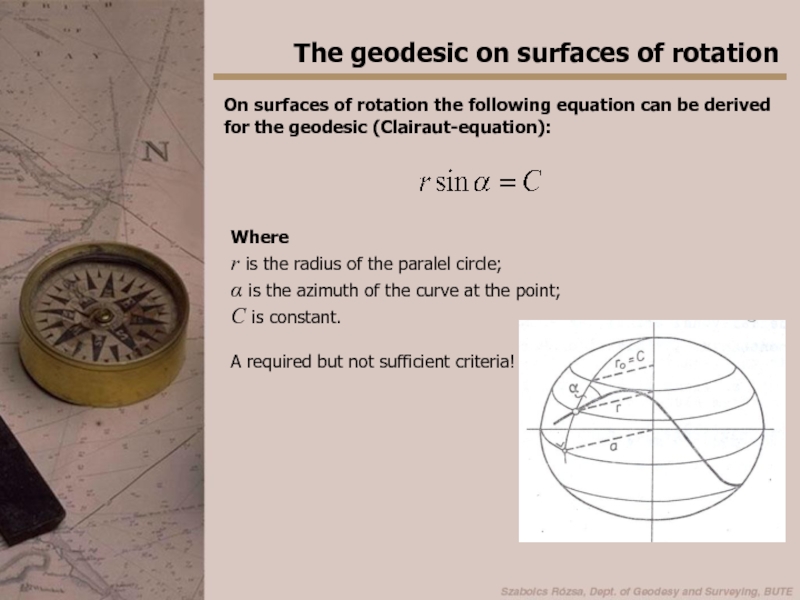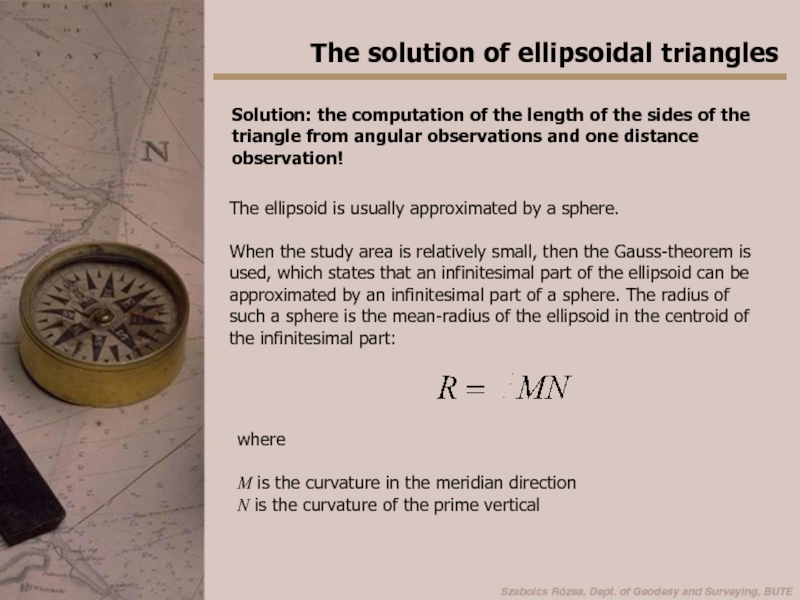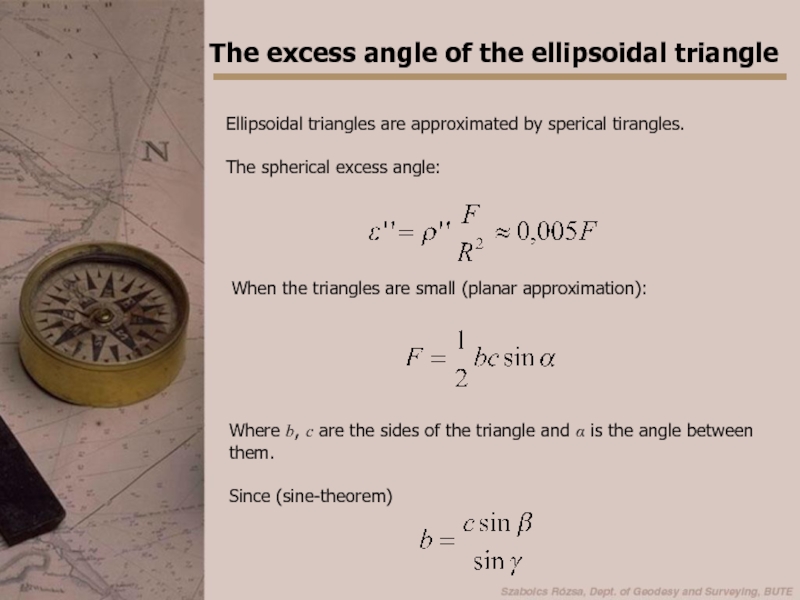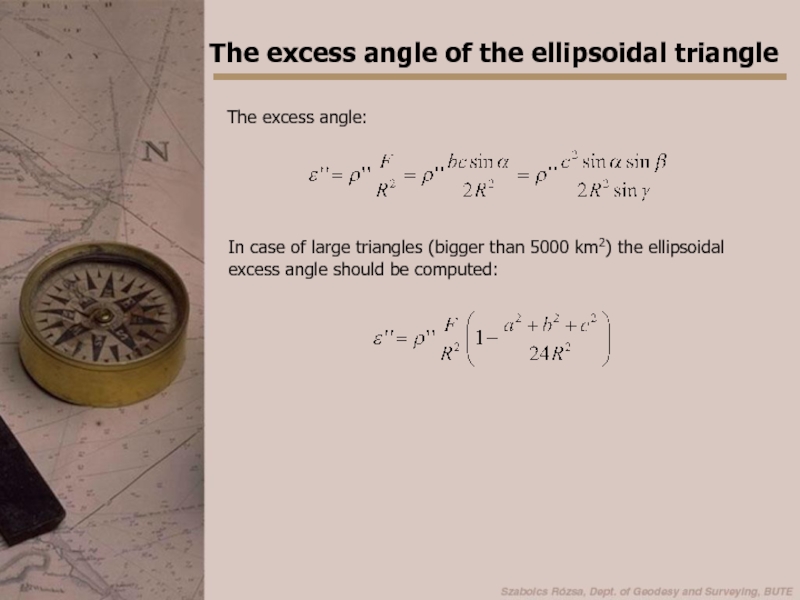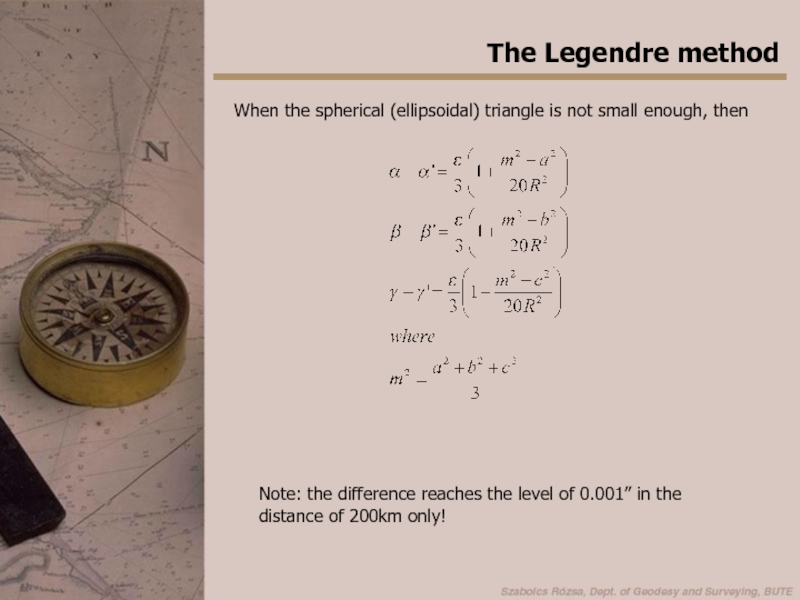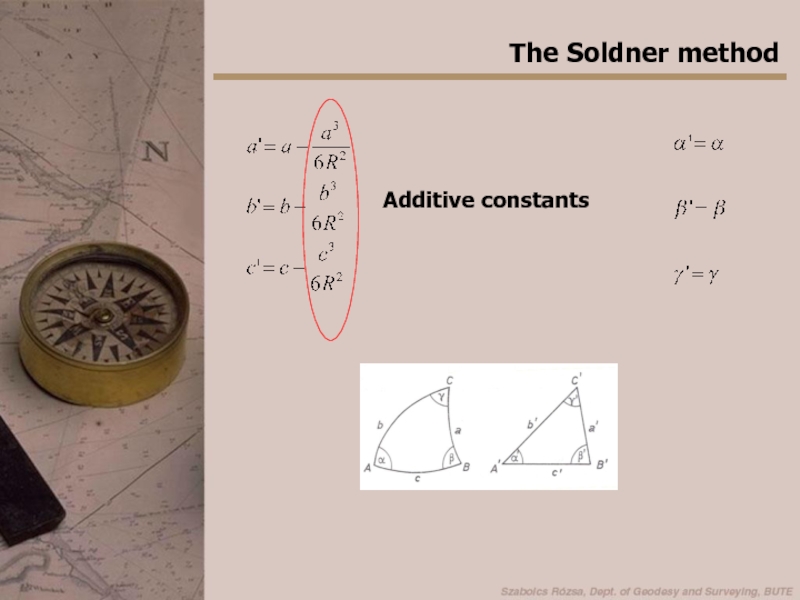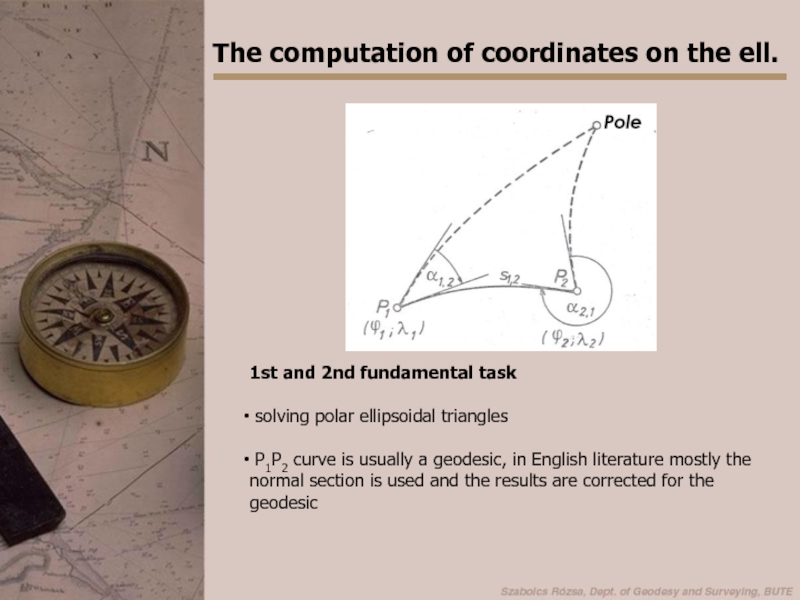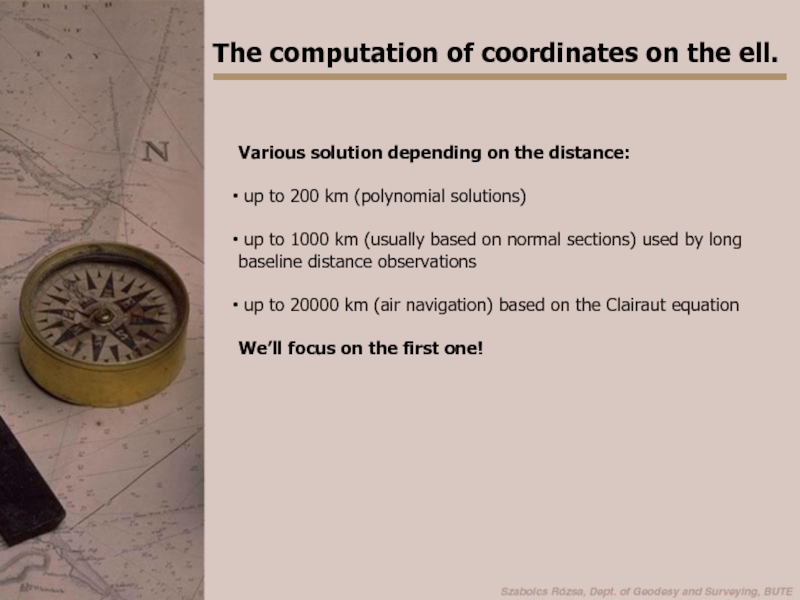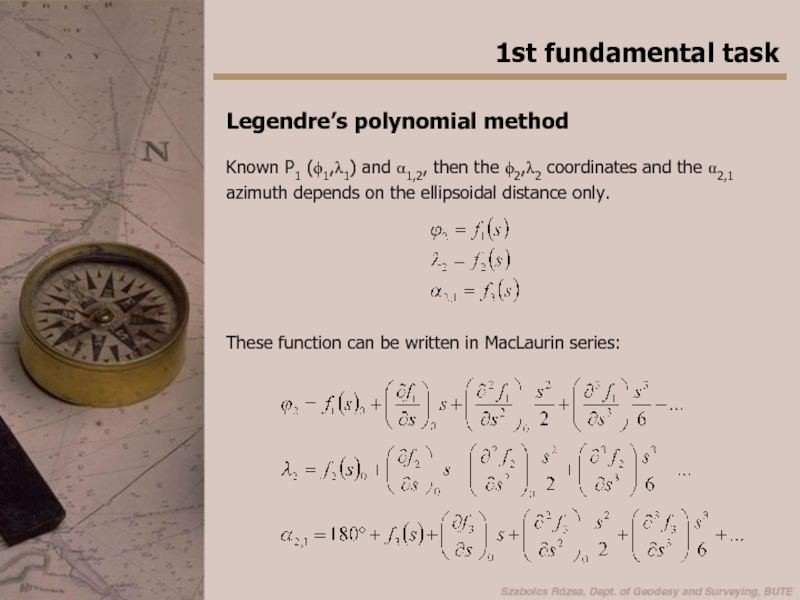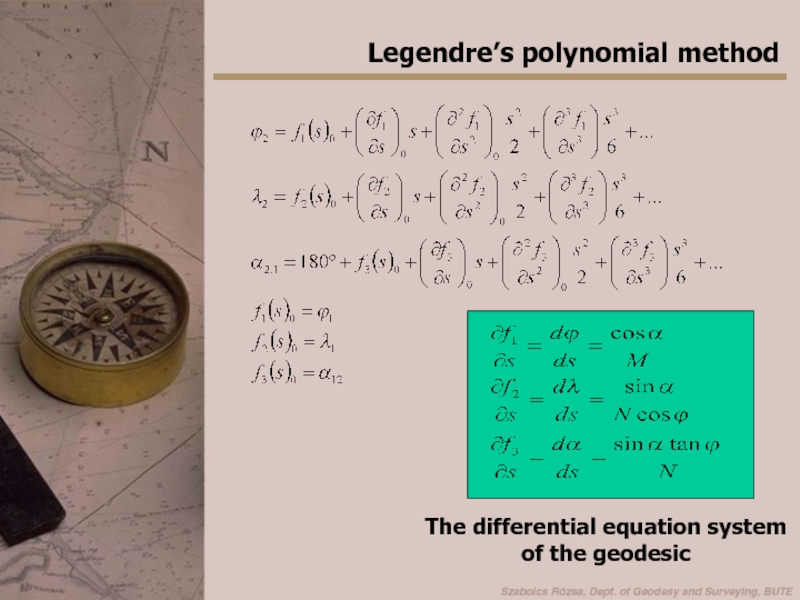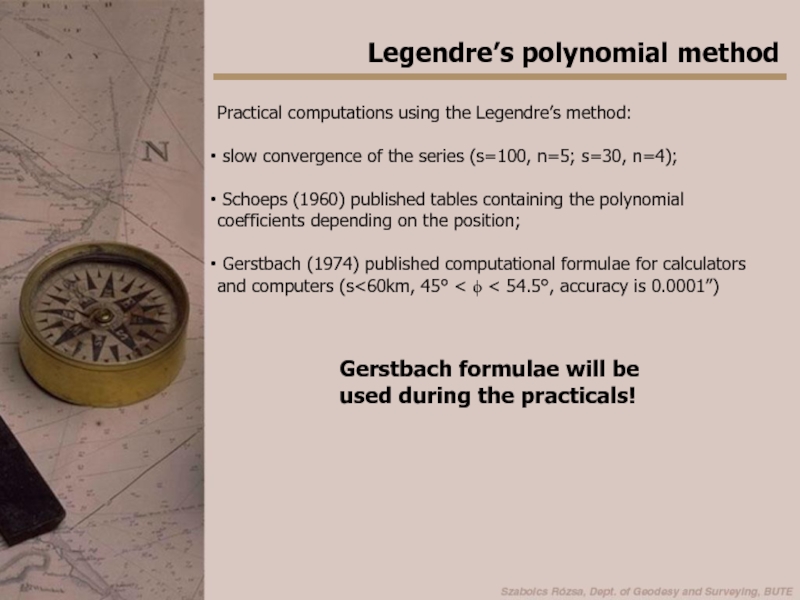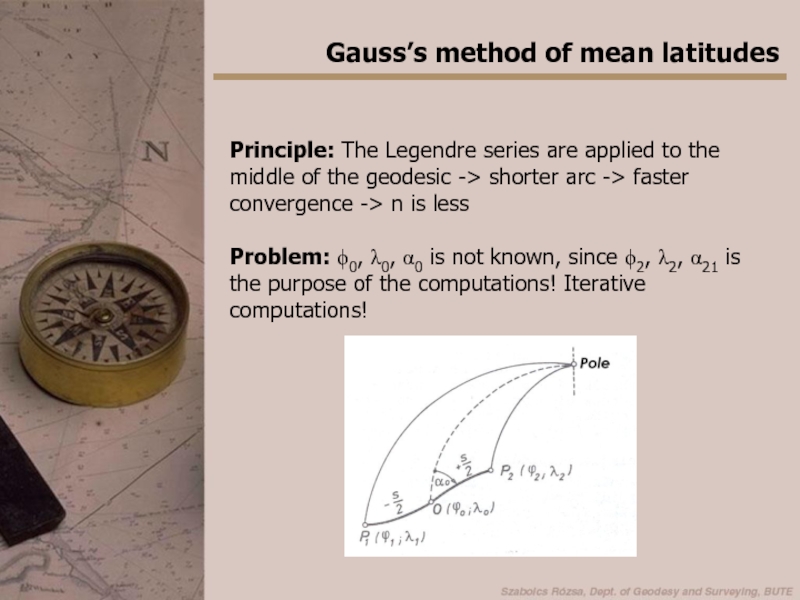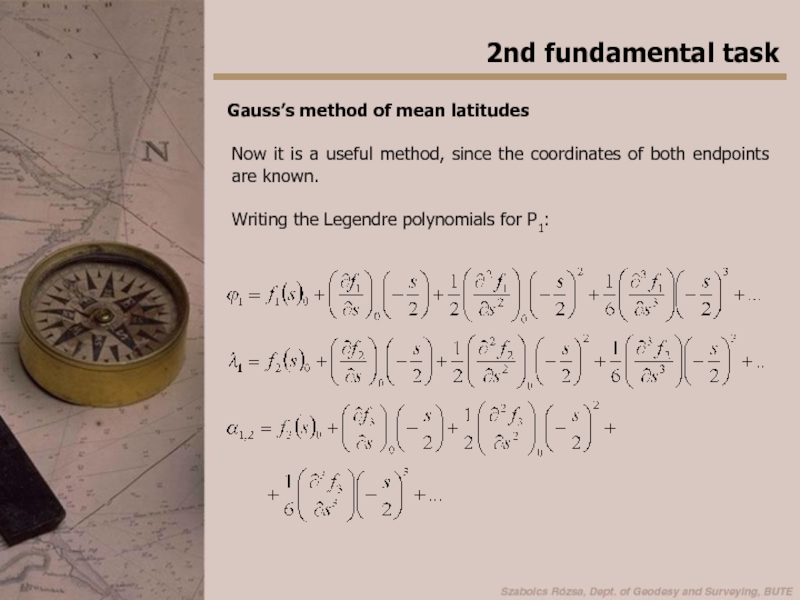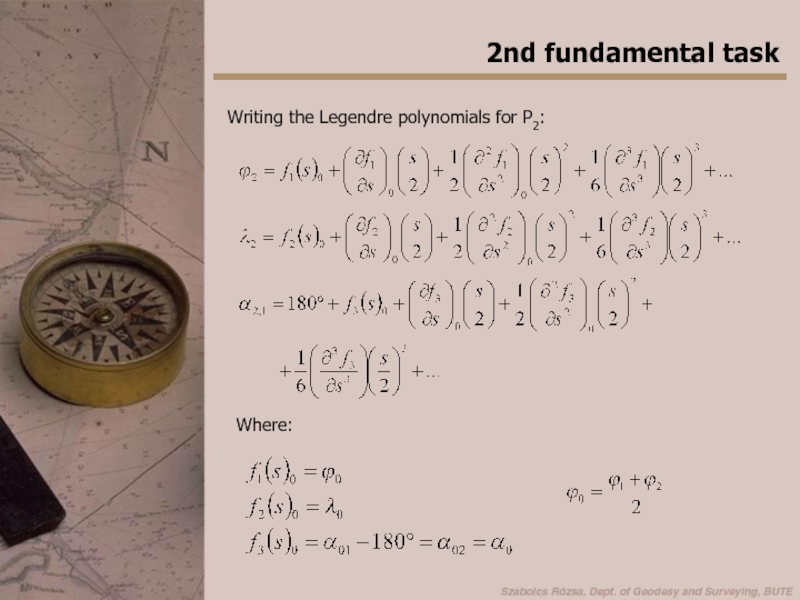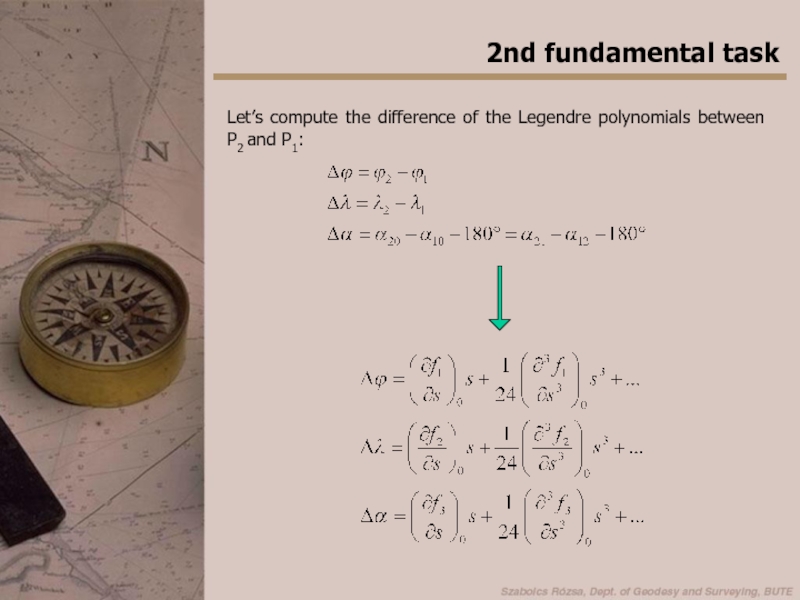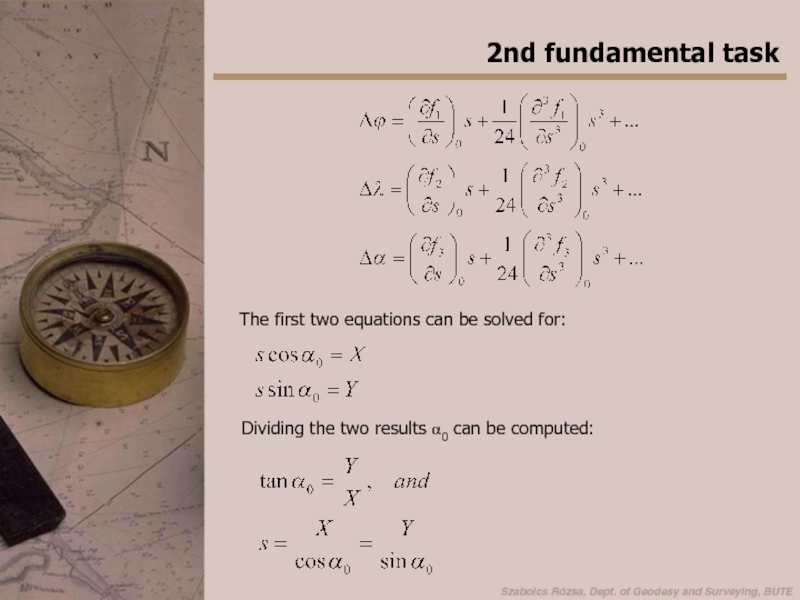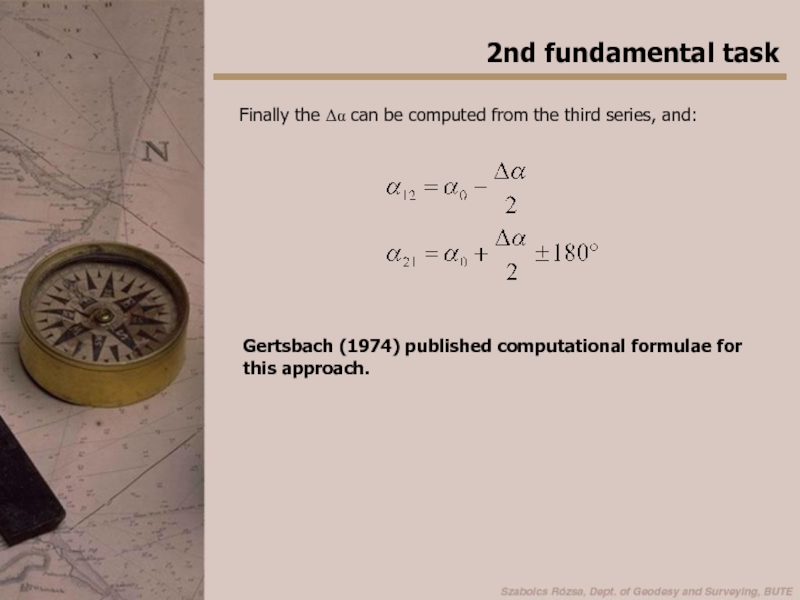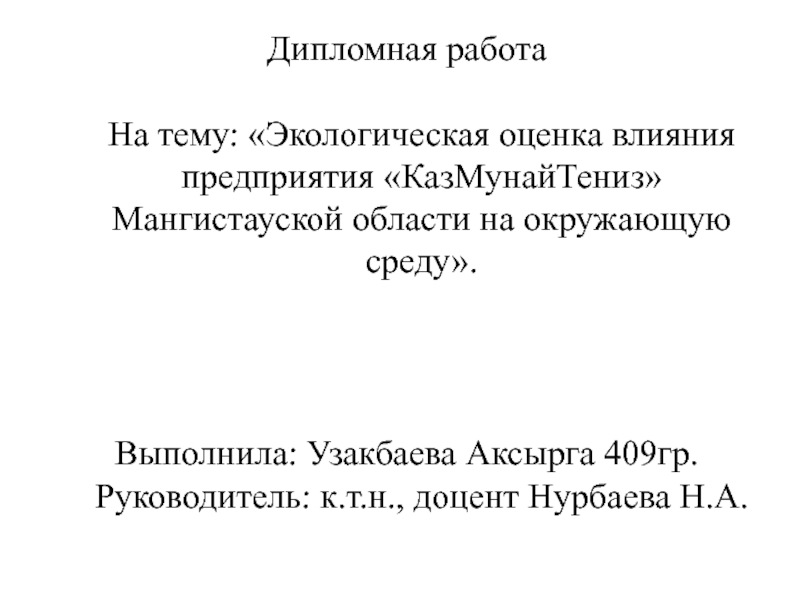- Главная
- Разное
- Дизайн
- Бизнес и предпринимательство
- Аналитика
- Образование
- Развлечения
- Красота и здоровье
- Финансы
- Государство
- Путешествия
- Спорт
- Недвижимость
- Армия
- Графика
- Культурология
- Еда и кулинария
- Лингвистика
- Английский язык
- Астрономия
- Алгебра
- Биология
- География
- Детские презентации
- Информатика
- История
- Литература
- Маркетинг
- Математика
- Медицина
- Менеджмент
- Музыка
- МХК
- Немецкий язык
- ОБЖ
- Обществознание
- Окружающий мир
- Педагогика
- Русский язык
- Технология
- Физика
- Философия
- Химия
- Шаблоны, картинки для презентаций
- Экология
- Экономика
- Юриспруденция
Geodetic control network. (Lecture 4) презентация
Содержание
- 1. Geodetic control network. (Lecture 4)
- 2. Outline Computations on the ellipsoid
- 3. The ellipsoidal curves The normal section
- 4. The normal section The normal section
- 5. The normal section The normal section
- 6. The normal section Notes on the
- 7. When we want measure the angles
- 8. The curve of alignment It is
- 9. The curve of alignment Notes on
- 10. The geodesic The general solution to
- 11. The geodesic The Frenet-frame contains three
- 12. The geodesic The geodesic: is an
- 13. Graphical derivation of geodesic on the ell.
- 14. Properties of the geodesic
- 15. The geodesic on surfaces of rotation
- 16. The solution of ellipsoidal triangles The
- 17. The excess angle of the ellipsoidal
- 18. The excess angle of the ellipsoidal
- 19. The Legendre method The ellipsodal triangles
- 20. The Legendre method When the spherical
- 21. The Soldner method Additive constants
- 22. The computation of coordinates on the
- 23. The computation of coordinates on the
- 24. 1st fundamental task Legendre’s polynomial method
- 25. Legendre’s polynomial method The differential equation system of the geodesic
- 26. Legendre’s polynomial method Practical computations using
- 27. Gauss’s method of mean latitudes Principle:
- 28. 2nd fundamental task Gauss’s method of
- 29. Writing the Legendre polynomials for P2: 2nd fundamental task Where:
- 30. 2nd fundamental task Let’s compute the
- 31. 2nd fundamental task The first two
- 32. 2nd fundamental task Finally the Δα
- 33. Thank You for Your Attention!
Слайд 2
Outline
Computations on the ellipsoid
Ellipsoidal curves (normal sections, curve of alignment,
The computation of ellipsoidal triangles;
Слайд 3
The ellipsoidal curves
The normal section and the reverse normal section
The curve
The geodesic
Слайд 4
The normal section
The normal section and the reverse normal section
At each
Normal sections are usually ellipses. When the point is located on the Equator, than a circular normal section can also be formed.
When a certain normal section is defined between two points on the ellipsoid (P1P2), than it must be noted that it differs from the normal section between P2P1, since the ellipsoidal normals have a skewness. The latter section is called the reverse normal section.
Слайд 5
The normal section
The normal section and the reverse normal section has
The maximal distance between the normal section and the reverse normal section is:
Where N1 is the radius of the curvature in the prime vertical.
Слайд 6
The normal section
Notes on the normal section:
when both of the
when both of the points are located on the Equator, than both the normal and the reverse normal section coincides with the Equator.
when both of the points are located on the same parallel curve (same latitude), then the normal section lies not on the parallel curve, but on the opposite side of the equator.
Слайд 7 When we want measure the angles of a triangle and
Disadvantage of the normal section
Слайд 8
The curve of alignment
It is usually used in the Anglo-Saxon
region.
Let’s suppose that P1 and P2 are two ellipsoidal
points. Let’s connect the P1 and P2 and form a
chord inside the ellipsoid. By drawing the
ellipsoidal normal from each point of the P1P2 chord, the intersections of these normals form the curve of alignment.
When in any point of the CoA an ellipsoidal normal is drawn, and a vertical plane is created, which contains P1, then P2 lies in this vertical plane as well, since the plane contains two points of the chord, thus it must contain all the points on the chord.
Thus the CoA can be defined as the sum of those points, in which the normal sections pointing to P1 and P2 has the azimuth difference of 180°.
The CoA connects to the normal sections of P1 and P2 tangential -> this is the main advantage, since the angular observations are equal to the angles between the curves of alignment.
Слайд 9
The curve of alignment
Notes on the CoA:
When P1 and P2
When P1 and P2 are on the Equator, then the CoA is the Equator.
When P1 and P2 are on the same parallel curve, then the CoA is located from both the parallel curve and the normal section in the opposite side of the Equator.
Слайд 10
The geodesic
The general solution to define the sides of the ellipsoidal
To define the geodesic, first we need to brush up our knowledge on the Frenet trihedron.
For any points on any curve in the 3D space three mutually orthogonal vectors can be created (the Frenet trihedron), which are:
the tangent;
the principal normal (perpendicular to the tangent, and is aligned with the radius of curvature of the curve;
the binormal (perpendicular to both the tangent and the principal normal;
Слайд 11
The geodesic
The Frenet-frame contains three different planes (formed by a pair
normal plane (the plane of the principal normal and the binormal);
osculating plane (the plane of the principal normal and the tangent);
rectifying plane (the plane of the tangent and the binormal).
Слайд 12
The geodesic
The geodesic: is an ellipsoidal curve, where at each point
Or: In each point the osculating plane of the curve is a normal plane of the ellipsoidal surface.
Or: The rectifying plane of the curve coincides the tangential plane of the ellipsoidal surface.
Or: The geodesic is a specific curve among the curves on the surface, that has the shortest path between
the two points. This is a sufficient criteria,
but NOT a required one (helix against the
straight line between two points on the same
element of a cylinder).
Example:
straight lines on the surfaces are geodesics (e.g. cylinder)
Слайд 15
The geodesic on surfaces of rotation
On surfaces of rotation the following
Where
r is the radius of the paralel circle;
α is the azimuth of the curve at the point;
C is constant.
A required but not sufficient criteria!
Слайд 16
The solution of ellipsoidal triangles
The ellipsoid is usually approximated by a
When the study area is relatively small, then the Gauss-theorem is used, which states that an infinitesimal part of the ellipsoid can be approximated by an infinitesimal part of a sphere. The radius of such a sphere is the mean-radius of the ellipsoid in the centroid of the infinitesimal part:
where
M is the curvature in the meridian direction
N is the curvature of the prime vertical
Solution: the computation of the length of the sides of the triangle from angular observations and one distance observation!
Слайд 17
The excess angle of the ellipsoidal triangle
Ellipsoidal triangles are approximated by
The spherical excess angle:
When the triangles are small (planar approximation):
Where b, c are the sides of the triangle and α is the angle between them.
Since (sine-theorem)
Слайд 18
The excess angle of the ellipsoidal triangle
The excess angle:
In case of
Слайд 19
The Legendre method
The ellipsodal triangles are approximated by spherical triangles (Gauss-theorem)
Слайд 20
The Legendre method
When the spherical (ellipsoidal) triangle is not small enough,
Note: the difference reaches the level of 0.001” in the distance of 200km only!
Слайд 22
The computation of coordinates on the ell.
1st and 2nd fundamental task
P1P2 curve is usually a geodesic, in English literature mostly the normal section is used and the results are corrected for the geodesic
Слайд 23
The computation of coordinates on the ell.
Various solution depending on the
up to 200 km (polynomial solutions)
up to 1000 km (usually based on normal sections) used by long baseline distance observations
up to 20000 km (air navigation) based on the Clairaut equation
We’ll focus on the first one!
Слайд 24
1st fundamental task
Legendre’s polynomial method
Known P1 (ϕ1,λ1) and α1,2, then the
These function can be written in MacLaurin series:
Слайд 26
Legendre’s polynomial method
Practical computations using the Legendre’s method:
slow convergence of
Schoeps (1960) published tables containing the polynomial coefficients depending on the position;
Gerstbach (1974) published computational formulae for calculators and computers (s<60km, 45° < ϕ < 54.5°, accuracy is 0.0001”)
Gerstbach formulae will be used during the practicals!
Слайд 27
Gauss’s method of mean latitudes
Principle: The Legendre series are applied to
Problem: ϕ0, λ0, α0 is not known, since ϕ2, λ2, α21 is the purpose of the computations! Iterative computations!
Слайд 28
2nd fundamental task
Gauss’s method of mean latitudes
Now it is a useful
Writing the Legendre polynomials for P1:
Слайд 30
2nd fundamental task
Let’s compute the difference of the Legendre polynomials between
Слайд 31
2nd fundamental task
The first two equations can be solved for:
Dividing
Слайд 32
2nd fundamental task
Finally the Δα can be computed from the third
Gertsbach (1974) published computational formulae for this approach.
